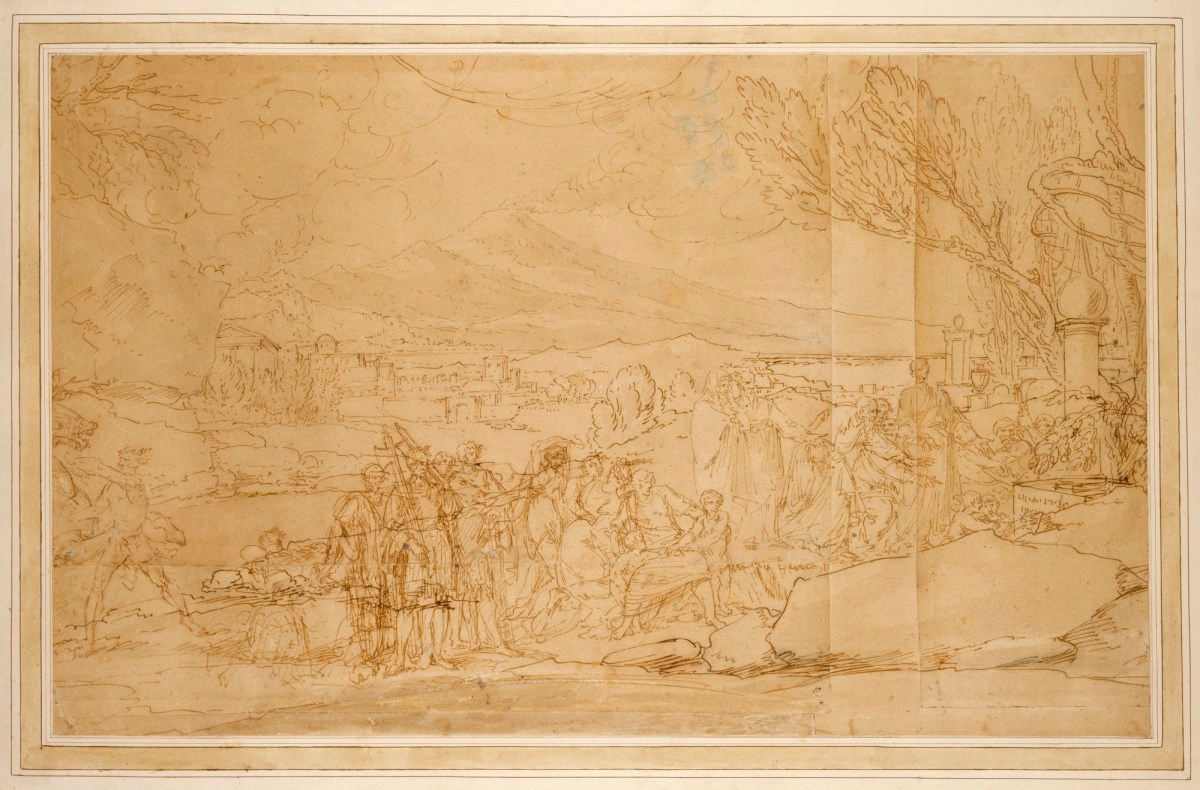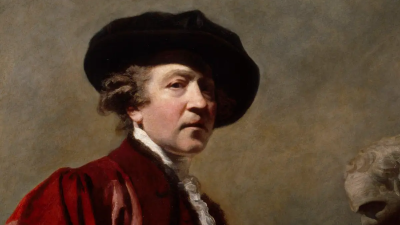
Benjamin West PRA, Cicero Discovering the Tomb of Archimedes, by 1797?.
Pen and ink with wash over pencil on laid paper. 440 mm x 712 mm. © Photo: Royal Academy of Arts, London. Photographer: Prudence Cuming Associates Limited.
This image is not available to download. To licence this image for commercial purposes, contact our Picture Library at picturelibrary@royalacademy.org.uk
Cicero Discovering the Tomb of Archimedes, by 1797?
Benjamin West PRA (1738 - 1820)
RA Collection: Art
This outline drawing depicting the Roman philosopher Cicero's discovery of the grave of the celebrated mathematician Archimedes, near Syracuse in Sicily, is a preparatory sketch for the first of West's two versions of the composition, produced in 1797. The painting was one of the works in which he used the notorious 'Venetian Secret', a fake manuscript touted as a record of the painting and colour-mixing techniques used by Titian and other Venetian Renaissance masters.
Thomas Provis and his daughter Ann, a miniaturist, had convinced West and a number of high-profile Royal Academicians that the manuscript was genuine, persuading them to pay a subscription to see it. The hoax was exposed shortly after West exhibited Cicero Discovering the Tomb of Archimedes, and his second version of the same scene, painted in 1804, can be seen as an 'atonement' painting. West was particularly susceptible to this scam because the colouring of his work had often been criticised.
Object details
440 mm x 712 mm
Start exploring the RA Collection
- Explore art works, paint-smeared palettes, scribbled letters and more...
- Artists and architects have run the RA for 250 years.
Our Collection is a record of them.



